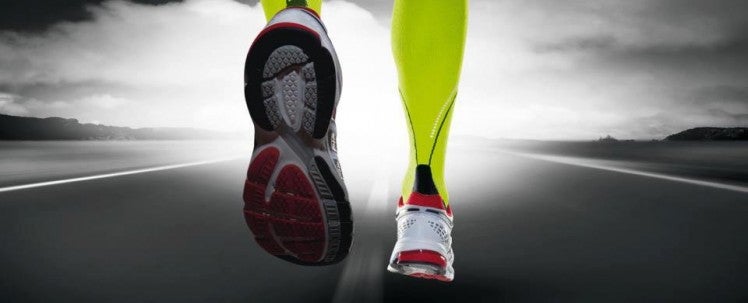Do Compression Socks Really Work?

The evidence appears anecdotal, but the perceived recovery benefits can’t be denied.
It doesn’t take much to convince runners to jump on the latest trend promising faster marathons and quicker recovery.
With manufacturers claiming compression socks and tights increase oxygen delivery, decrease lactic acid, prevent cramps, and minimize muscle fatigue, the wonder garments have been the hottest new item in athletic circles. But, whether or not the socks and tights deliver as promised has been an open question – one even researchers don’t have a clear answer for.
“There is no doubt that many runners trust compression garments,” said Ajmol Ali, a PhD in the Sports and Exercise Science Department of Massey University. Ali has conducted a number of studies on the garments with mixed results.
For decades, medical-grade graduated compression socks have been used to combat deep vein thrombosis, or the formation of blood clots. By increasing the circulation and blood flow, research has found the socks to be effective for bed-ridden and inactive patients.
Research on the effectiveness of compression garments in athletic pursuits, though, has been hit or miss.
“Very little evidence exists (ie. two to three studies out of 15-plus) from a sport and exercise perspective that compression garments improve performance when worn during exercise,” said Rob Duffield, a professor at the School of Movement Studies at Charles Sturt University.
One study found that when 21 male runners did two step tests – one with compression socks and one without – they were able to go slightly longer wearing the compressions before exhaustion. There have also been some small increases seen in anaerobic threshold, particularly in cycling, and in jumping performance. The theory is that the tights prevent oscillation of the muscles sideways and promote muscle efficiency.
But, Ali noted that many of the studies that have found increases in performance did not use a placebo or control, making it nearly impossible to tell if the increases were really from the compression or from the athlete’s perception of the compression.
Read more: Competitor.com